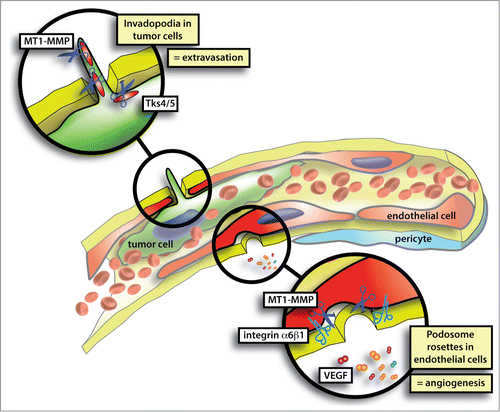Figures & data
Figure 1. The process of vascular BM invasion during tumor cell extravasation or endothelial sprouting is dependent on the formation of invadopodia or podosomes, respectively. Podosomes and invadopodia, collectively known as invadosomes, are specialized cell-matrix contacts with an inherent ability to degrade ECM. Molecular players involved in invadopodia formation are cortactin, Tks4/5 and MT1-MMP. VEGF and α6 integrin are crucial for endothelial podosome rosette formation while MT1-MMP is enriched in podosome rosettes.

Figure 2. (A) Blood vessels are covered by a dense layer of ECM, the vascular BM. In tumors, ischemia or wound healing, quiescent vasculature is actually stimulated to form new vessels. Long time stimulation with pro-angiogenic factors, such as VEGF, induces angiogenic vessels to first overcome the physical barrier of vascular BM and generate a new tip cell and then to sprout by forming a new vessel. (B) Similarly, trees are covered by cortex that is a thin and dense layer protecting them. In the natural process of sprouting of a plant, adventitious buds breach the cortex in specific regions. Only where the cortex is breached the formation of new sprouts and branches is possible.

